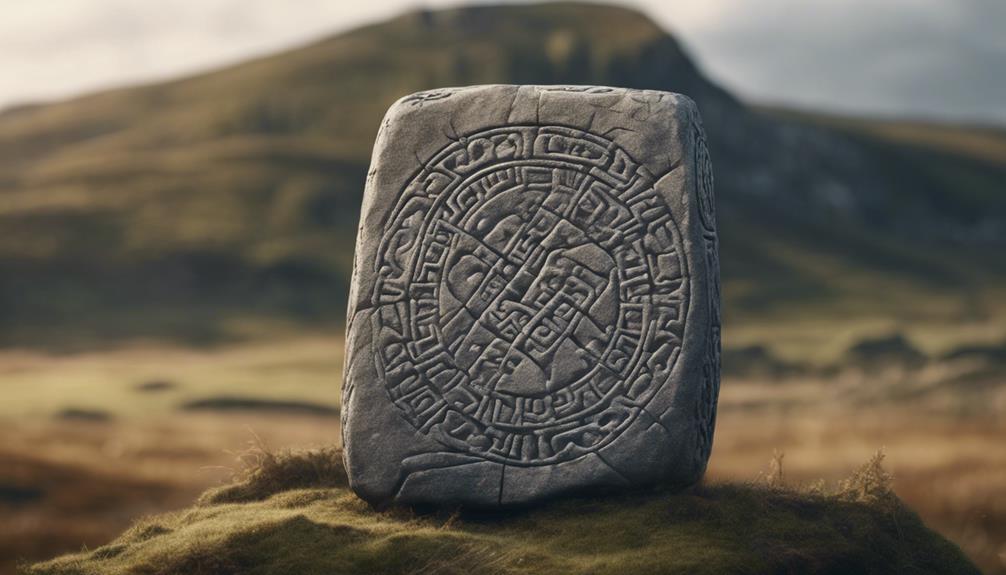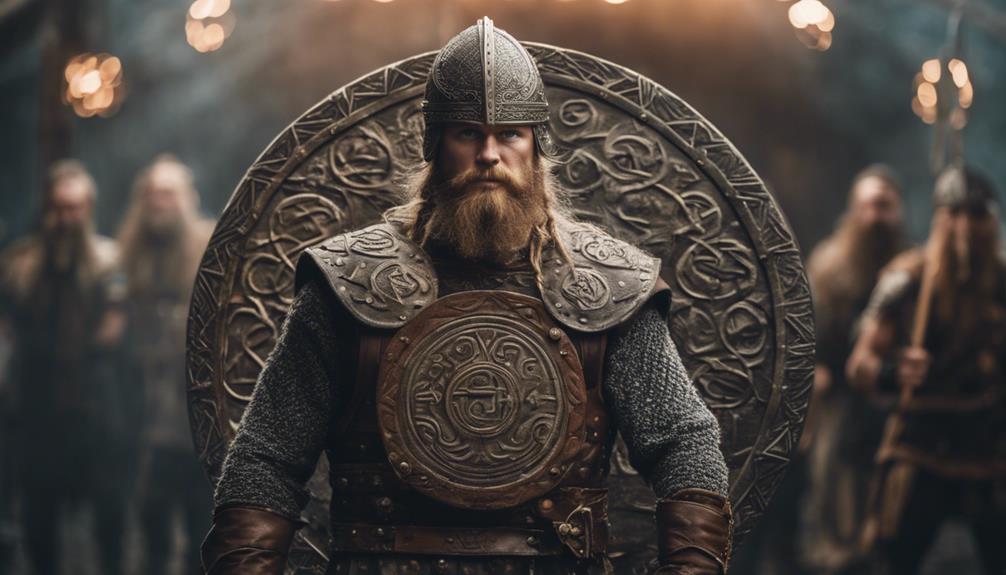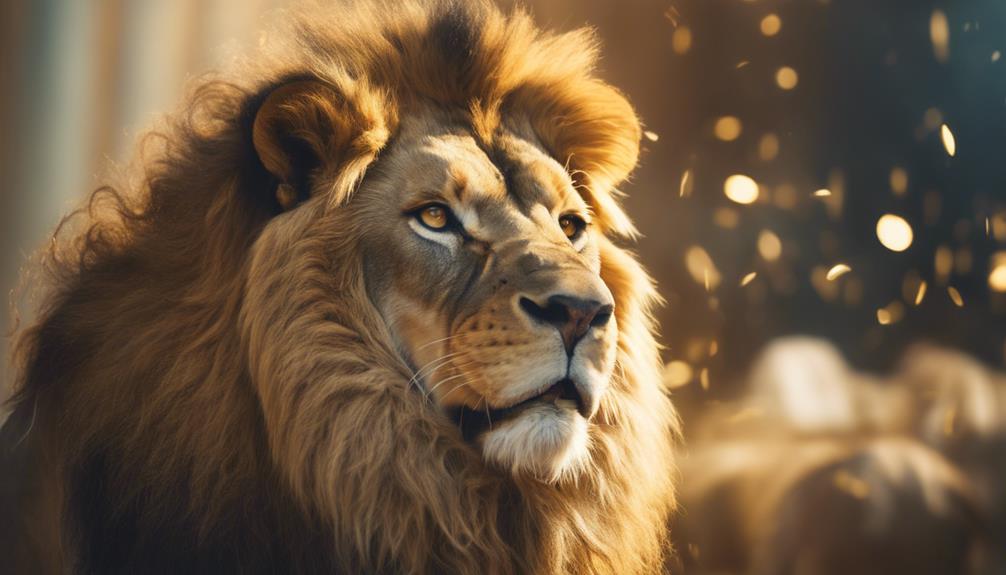To crack Viking symbols, it’s key to get their Norse mythology roots. **Symbols** like the Helm of Awe and Valknut weren’t just random—they represented *protection and guidance*. Norse folks thought these symbols had magic, connected to nature and gods. Viking runes, from the Elder Futhark alphabet, had meanings for things like luck. The **knotwork and animal symbols** show eternal ties and strength. Discovering these symbols offers a glimpse into Viking beliefs and traditions.
Key Takeaways
- Understand the cultural context and Norse mythology associated with the symbol.
- Research the symbolic meanings and historical significance of the specific Viking symbol.
- Consider the material and context in which the symbol is found.
- Explore any connections the symbol may have to gods, nature, or specific beliefs.
- Consult experts or resources on Viking symbolism for accurate interpretations.
Understanding the Origins of Viking Symbols
The origins of Viking symbols trace back to Norse mythology and cultural beliefs. These symbols weren't just intricate designs but held deep symbolic meanings for the Viking people. They were more than just drawings; they were a representation of their values, beliefs, and connection to the spiritual domain.
Vikings used symbols like the Helm of Awe and Valknut for protection, guidance, and as a way to invoke spiritual power. In Norse mythology, these symbols were believed to possess magical properties that could ward off evil and bring luck to those who wore or displayed them.
The intricate designs of Viking symbols reflected their close relationship with nature and the gods they worshipped. Understanding the origins of these symbols provides valuable insight into the mindset and spiritual beliefs of the Viking people, shedding light on their way of life and the importance they placed on protection and symbolic meanings.
Exploring Symbolic Meanings in Norse Culture
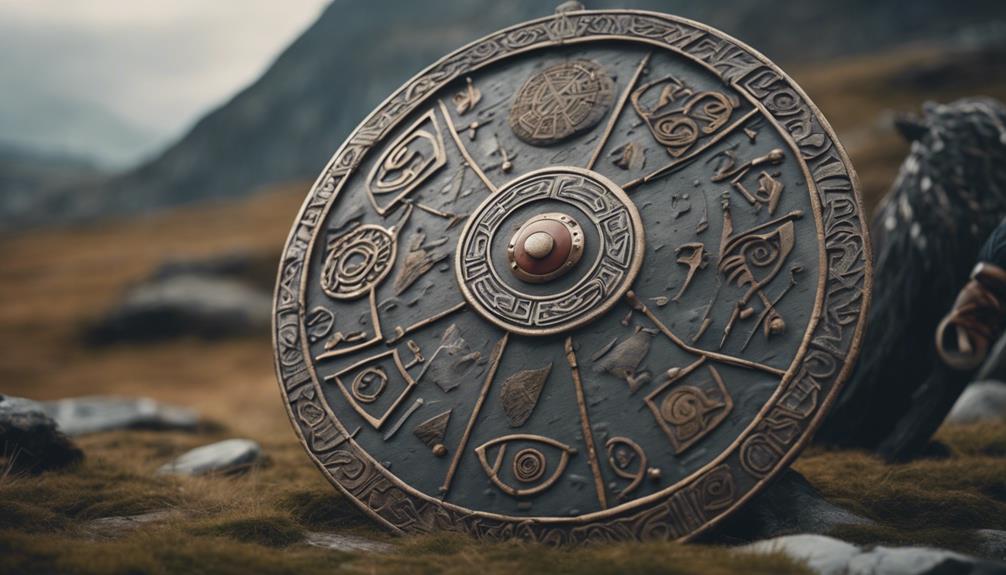
Exploring the symbolic meanings embedded in Norse culture reveals a rich tapestry of beliefs and values that guided the Vikings in their daily lives. Norse symbols like the Helm of Awe were essential for protection in battle, instilling courage and strength in warriors.
The Valknut symbolizes the interconnectedness of life and death, emphasizing the deep spiritual beliefs of the Vikings. Thor's hammer, Mjolnir, symbolizes strength and protection, associated with the mighty god Thor, providing a sense of security to those who wore it.
The Vegvisir, a symbol of guidance and safe travels, highlights the importance of navigation in Viking culture, ensuring sailors found their way home safely. Yggdrasil, the tree of life, symbolizes the interconnectedness of the universe and the cycle of life and death, offering a profound perspective on existence for the Vikings.
These symbols weren't merely decorations but held significant meaning, shaping the beliefs and practices of Norse society.
Unraveling the Mysteries of Viking Runes
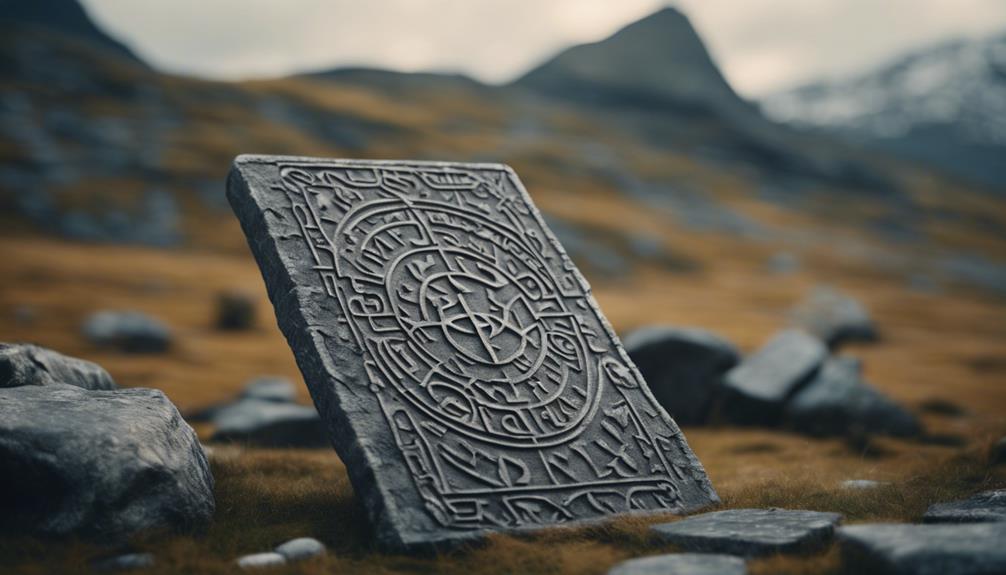
Viking runes are an ancient alphabet system that holds deep symbolic meanings in Norse culture. Each rune carries a specific significance and was often used for various purposes.
Decoding these runic symbols can reveal fascinating insights into the beliefs and practices of the Norse people.
Rune Meanings Explained
Uncover the ancient secrets and symbolic meanings behind Norse runes, shedding light on the mystical world of Viking communication and magic.
Viking runes, part of the Elder Futhark alphabet, hold diverse meanings like protection, luck, and guidance. These symbols were meticulously inscribed on materials like stone, wood, or metal for messaging and invoking mystical powers.
Understanding the significance of each rune provides insights into Viking culture's beliefs and practices. Delving into the rich history, mythology, and spiritual aspects of these symbols reveals the depth of Viking communication.
Symbolism in Runes
Symbolism permeates every aspect of Viking runes, offering a glimpse into the intricate web of meanings woven into each runic character. The runic alphabets weren't just symbols within the Norse language but held deep significance in Viking history.
Each of the 24 letters had a unique symbolism, representing sounds and words important to the Vikings. Runes were more than just a form of communication; they were a symbol of protection and spiritual beliefs. Vikings commonly etched these symbols on stone, wood, and metal for various purposes, such as commemorating events or seeking guidance.
Through the study of runic alphabets, we can unravel the mysteries of Viking culture and gain insight into their beliefs and practices.
Decoding Symbolism Through Mythological Stories

In the rich tapestry of Viking mythology, mythological stories offer a key to revealing the deeper meanings behind the symbols embedded within their culture.
- The tale of Odin's sacrifice on Yggdrasil illustrates the pursuit of wisdom and the interconnectedness of the world, shedding light on the importance of seeking knowledge to decipher Viking symbols.
- Loki's mischief and transformations symbolize the duality of nature and the necessity of adaptability in understanding the complexity of Viking symbolism.
- Thor's battles with giants and his mighty hammer, Mjolnir, represent themes of protection, strength, and the ability to conquer adversaries, providing insights into the protective aspects of Viking symbols.
- The binding of Fenrir by the gods showcases themes of bravery and overcoming challenges, offering a lens through which to interpret the symbolism of courage embedded in Viking culture.
Through these mythological stories, Vikings communicated profound messages about bravery, adaptability, protection, and the pursuit of wisdom, enriching the symbolism woven into their cultural artifacts and beliefs.
Interpreting the Intricate Details of Symbols
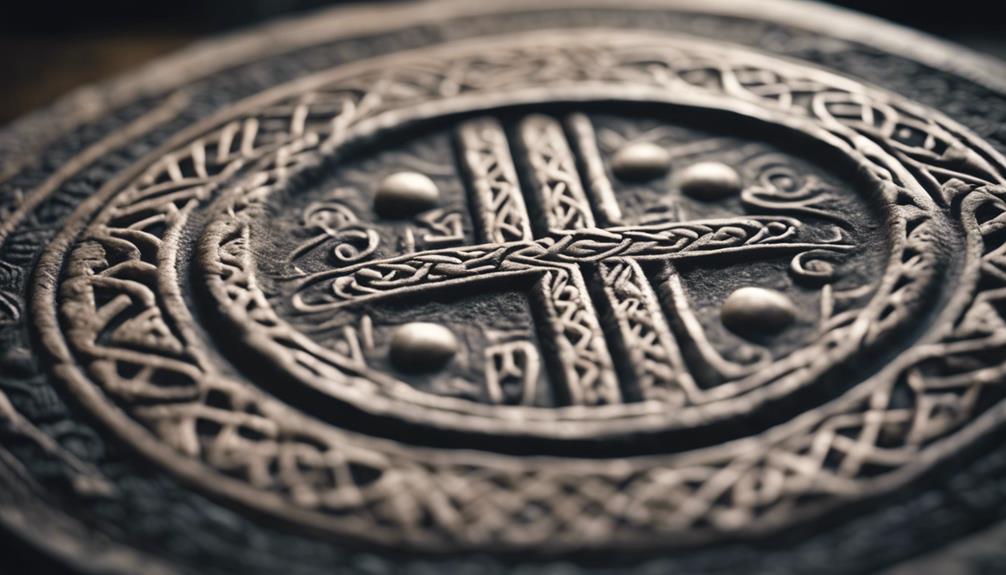
When examining Viking symbols, it's essential to pay attention to the intricate details present in their shapes and meanings. These details often hold significant cultural context that sheds light on the symbolism's deeper significance.
Symbol Shapes and Meanings
Interweaving intricate details of knots, animals, and geometric shapes, Viking symbols artfully convey profound meanings rooted in their cultural beliefs. When interpreting these symbols, it's essential to understand the significance of each element present:
- Knotwork Symbols: Represent eternity and interconnectedness in Norse culture, symbolizing the cyclical nature of life.
- Animal Symbols: Wolves, ravens, and dragons embody traits such as strength, wisdom, and protection in Norse mythology.
- Geometric Shapes: Triangles, spirals, and circles symbolize balance, growth, and cosmic order in Viking symbolism.
- Combination of Elements: The blend of different shapes in Viking symbols creates a rich tapestry of meanings, inviting exploration and interpretation.
Cultural Context Considerations
Considering the intricate details of Viking symbols requires a deep understanding of the cultural context in which they were created. In the Viking Age, symbols held significant meanings deeply rooted in Old Norse beliefs and traditions. Runes and symbols, often associated with Odin, were prevalent in Norse culture, representing concepts like protection, guidance, and connections to the divine.
Deciphering these symbols involves analyzing their placement, combinations, and any accompanying runes to reveal the layers of meaning within Viking symbolism. Symbols like the Helm of Awe or Vegvisir were used on ships, in burials, and as personal adornments, each carrying specific messages relevant to different aspects of Viking life.
Unlocking the Spiritual Wisdom of Vikings
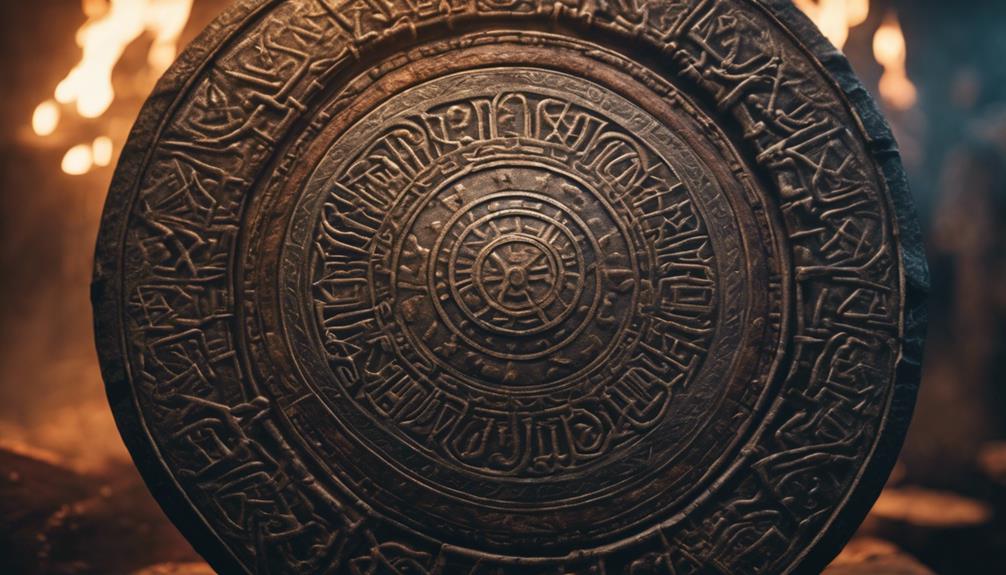
Delving into the spiritual wisdom of Vikings reveals a profound connection to their beliefs through the deciphering of symbolic representations like the Helm of Awe and Valknut. Understanding these symbols can provide insights into the Viking culture's spiritual significance and values. Here's how these symbols unveil the spiritual wisdom of the Vikings:
- Protection: The Helm of Awe, also known as 'Ægishjálmr,' was believed to protect warriors in battle by instilling fear in their enemies and granting them courage and strength.
- Guidance: The Valknut symbolizes the interconnectedness of life, death, and destiny. It was thought to guide fallen warriors to the afterlife and represent the cycle of rebirth.
- Beliefs: Decoding Viking symbols reveals their deep-rooted beliefs in the power of the gods, fate, and the natural world.
- Spiritual Connection: These symbols weren't merely decorative but held spiritual significance, reflecting the Vikings' connection to the divine and their understanding of the universe's mysteries.
Frequently Asked Questions
Can Viking Runes Be Read?
Viking runes are indeed readable. Each rune represents a sound or a word in the Old Norse language. Decoding these symbols allows for understanding their meanings and the messages they convey.
They were commonly inscribed on materials like stone, wood, and metal for various purposes. By learning the pronunciation and meanings of Viking runes, one can interpret ancient inscriptions and messages left by the Norse people.
Which Runes to Avoid?
To navigate Viking runes effectively, steer clear of Thurisaz, Gebo, and Hagalaz for their potential negativity.
Watch out for Eihwaz, Othala, and Isa, as their meanings can be intricate.
Approach Nauthiz, Berkana, and Raidho cautiously due to their varying interpretations.
Exercise care with Ansuz, Laguz, and Ingwaz for their nuanced symbolism.
What Is the Most Powerful Viking Symbol?
The most powerful Viking symbol is often considered to be Thor's Hammer, Mjolnir. Wielded by Thor, the Norse god of thunder, it represents protection and strength.
Vikings wore Mjolnir pendants for invoking Thor's safeguard in battle and daily life, symbolizing physical strength, spiritual power, and divine protection.
The enduring popularity of Mjolnir reflects its timeless appeal in Norse culture and heritage.
How Do You Read Rune Stones for Beginners?
When reading rune stones, beginners should first learn the meanings of individual runes. Understanding how runes are placed and combined on a stone can provide deeper insights.
Practice casting and interpreting runes on stones or tiles to enhance understanding. Learning about the history and context of runic inscriptions can help decode Viking symbols.
Is There a Connection Between Viking Symbols and Crystal Meanings?
Viking symbols and crystal meanings have been intertwined throughout history. The Norse people valued the power and symbolism of crystals, believing they held significant spiritual properties. Different crystals were associated with specific Viking symbols, serving as a guide in their rituals and beliefs. Understanding this connection enhances our understanding of the Viking culture and their deep appreciation for the mystical world of crystal meanings.
Conclusion
To sum up, delving into the mysteries of Viking symbols is like peeling back layers of history to reveal hidden treasures.
By exploring the origins, meanings, and stories behind these ancient symbols, we can gain insight into the rich culture and spiritual wisdom of the Vikings.
So, next time you come across a Viking symbol, remember that it holds a depth of symbolism waiting to be discovered, like a key to revealing the secrets of the past.

